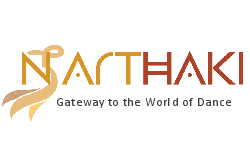
|
 |

|
 |
Dr. Sandhya Purecha: I am very positive about the future - Dr. M. Surya Prasad e-mail: drmsuryaprasad@gmail.com March 19, 2025 Bharatanatyam exponent, author, scholar, researcher, teacher and choreographer Dr. Sandhya Purecha is the founder-principal of Bharata College of Fine Arts and Culture, Mumbai, and the Chairman of Sangeet Natak Akademi, New Delhi. Among her many awards and recognitions, she has been awarded Honorary Doctorate by the illustrious Karnataka State Gangubai University of Performing Arts, Mysore, for her exemplary and dynamic contributions to the dance field. She has also won the prestigious and well deserved 'Kalidas Samman' of the Govt. of Madhya Pradesh. Dr. Purecha shares her views in an exclusive interview for Narthaki. 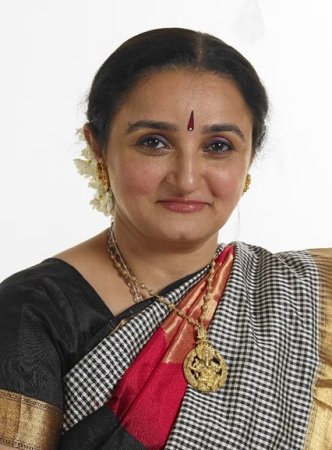 I would like to celebrate these distinguished moments of your career through this interview. Please share your feelings. I am deeply gratified to acknowledge the twin illustrious recognitions. I whole heartedly thank all for their inspiring wishes. What is the specialty of your art form? The specialty of my art is that it is rooted in the time tested Shastra and Sampradaya - forming the links between theory and practice of Indian dance. How did you get initiated into it? My journey began with learning Indian folk dances under renowned folk maestro Late Ramesh Purav Sir in Mumbai. And while working as the lead role in a dance ballet called 'Durga Zaali Gauri', I met the ace choreographer and legendary Bharatanatyam Guru Acharya Parvatikumar. I was blessed to begin my 'sadhana' under his tutelage. Guruji's approach to dance was profound and full of curiosity. That our dance is derived from the Shastras is undisputed and my Guruji Acharya Parvatikumar became a legend for his relentless work in rediscovering the roots of the detailed gestures and postures of Bharatanatyam. Acharya thoroughly explored the poetic treatise Abhinaya Darpanam (around 1000 AD) by Nandikeshwara in Sanskrit as the ideal treatise for Bharatanatyam and decided to choreograph the text into dance and compose it to music. I was destined to get trained by him and I was selected to learn and present the 324 verses (padyaas) of the text. The entire process of research and choreography took about five years during which time I could master every syllable of the great treatise, finding its root and the meaning before transforming it into movement. This process initiated the concept of 'abhyaas' within me and sculpted my noteworthy approach to dance. This was of course, in addition to learning a rich repertoire of traditional Bharatanatyam pieces from Guruji. 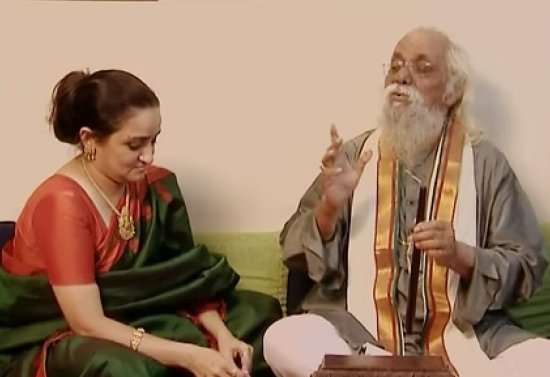 Dr. Sandhya Purecha with Acharya Parvatikumar What are your contributions in refining and refreshing it? Taking Guruji's work a step further, I continued with my 'abhyaas' and conducted additional research on dance texts across different centuries and completed my PhD in 'Theory and Practice of Angikabhinaya in Bharatanatyam' with references from over 40 Sanskrit treatises on dance. Further, I received the Junior and Senior Fellowships from the Ministry of Culture, Govt. of India to work on rare and novel concepts such as 'Samanya Abhinaya' from Natyashastra and the 'Kalasa Karanas' from Nritya Ratna Kosha (15th century). This was not enough, and I wanted to go beyond adapting the shlokas into an audio-visual presentation. So I created productions like' Guru Dakshina' which was an extension of the Abhinaya Darpanam in a group choreography which was contemporary in its music, theme and costumes. Similarly, I conceptualised and choreographed 'Arthashringara', weaving Kalidas' lyrical poetry of Ritusamhaar with the Kalasa Karanas (movements derived from nature). These are just a couple of examples but almost all my productions have an implicit bondage with the Shastra. Similarly, with traditional repertoire - I have choreographed a vast number of pieces in Sanskrit by Adi Shankaracharya, from the Padma Purana, Durga Saptashati, etc. which have been steered by my study and devotion to these pious and powerful texts. Do you welcome changes in the performances? Parivartan hi jeevan hai - Change is life. That is the ultimate truth. I always tell my students: Roti kyun jali? Ghoda kyun ada? (Why did the roti burn? Why did the horse stop?) - the answer is kyunki pher nahin (because there was no movement). One must constantly reassess and refresh oneself with time. Changes in performance are welcome. Just as we study auchityam - appropriateness and relevance - in Alamkara Shastra or poetry, we should apply the same principle to dance. However, I do believe that traditional compositional structures should not be tampered with. We should not deprive future generations of the opportunity to understand the true essence of our tradition. Building upon those foundations is welcome, provided the base remains strong. What are the audience responses and responsibilities? We have been receiving an overwhelming response from audiences for the various programs we have organized across different states. In today's fast-paced consumer-driven world, where people have access to everything - including entertainment - at the click of a button on their mini screens, it is undoubtedly a challenge to draw audiences to physical venues. However, we have been fortunate to achieve this. This not only introduces new audiences to Indian traditional and indigenous dance forms but also instils a sense of pride in our cultural heritage. Hopefully, this engagement translates into greater viewership for other programs and some may even be inspired to learn these art forms. One of the key responsibilities of audiences today is to cultivate patience. They should allow themselves to enjoy an immersive experience, fully absorbing the Rasa that our art forms offer. Beyond just attending, those who develop an interest should take the initiative to read and learn more about the art form. Another crucial responsibility is sharing - just as a single WhatsApp message can spread like wildfire, appreciation for the arts should be passed on. If you enjoy something, bring your friends along and introduce them to more performances. Word of mouth plays a powerful role in sustaining and enriching the appreciation for our cultural heritage. 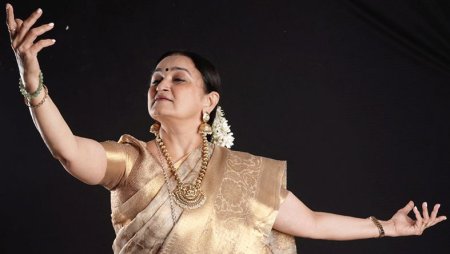 Are you happy with the roles played by the State and Central Govts. in nourishing and patronizing the art form? Yes, definitely. We have successfully taken various art forms to the farthest corners of India and established deep, personal connections with local artistes. I can confidently say that I have received unwavering support from the Central Government and have been actively collaborating with State bodies to organize various programmes and performances at rare historic sites and smaller cities, projects aimed at reviving fading art forms, supporting artists, upskilling them and creating employment opportunities. The focus on culture has strengthened, with the Government recognizing its role as a soft power and extending full support. We have even achieved three Guinness World Records, showcasing India's rich cultural diversity. Additionally, we have expanded our reach to new audiences and encouraged greater participation, even from those previously unfamiliar with various art forms. What do you expect from Non-Govt.-bodies (NGOs) in encouraging it? To NGOs, my recommendation would be to integrate arts in their regular activities and see the difference it makes! What is your suggestion for the promotion of the arts? At the government level, we are doing our best by pooling resources to give visibility and a platform to Indian performing arts. However, the responsibility of promoting the art form cannot solely rest on the government. It must be shared by audiences and importantly, by commercial enterprises that have the financial strength to support cultural initiatives. These enterprises should contribute to Indian culture and the arts through Corporate Social Responsibility (CSR) funding, helping to build a sustainable infrastructure for the arts. I also deeply admire how the new generation of artistes is making traditional art forms more relatable and accessible to modern audiences. Cities like Bangalore, Hyderabad and Pune are seeing a growing interest in traditional dance and music, which is a positive sign for the future. The key to sustaining this growth is consistency - if we continue to focus on our dharma and karma - which, for us, is dance - there is no limit to where we can go. We have already come a long way. No matter how much people may drift or search for something new, they will always seek to reconnect with their roots. And when they do, we will be here, ready to share the richness of our tradition. The important thing is to keep working, stay focused, and continue nurturing the arts, ensuring they thrive for generations to come. 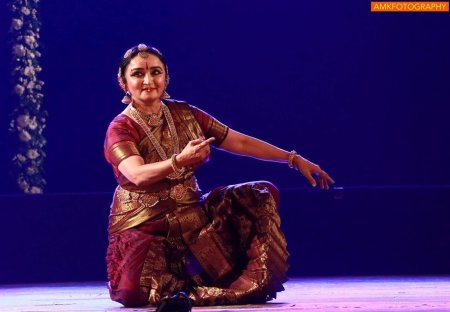 Are you happy with the second line of artistes in your field? The new generation comes with immense promise, sincerity, a strong voice of reason, creative freedom, access, ideation, quest for knowledge with the world as their canvas. About adherence to classicism and tradition? If I distinguish between the two terms, classicism refers to the texts, while tradition refers to the practice. Our art forms are deeply rooted in both the texts and their application. No matter how much we experiment or innovate, we will always be drawn back to the roots, as they form our foundation. If the texts represent our roots, then Parampara (tradition) serves as the trunk, and the experiments and innovations are the branches that grow from it. Do you encourage experimentation and innovation? 'Akrutyamcheshtyamchinnairjaataya, vigneyavastutam... swayamvitarkat kartavyam hastabhinayabudhaihi.' This verse from the Natyashastra (Chapter 9, Shloka 152) essentially means that Bharata, the great sage and the foundation of our art form, encourages artistes to present and interpret these teachings in their own way. If the very creator of the framework of our art form promotes such freedom and innovation, then I wholeheartedly support it. Experimentation and innovation are essential to keeping the art alive and relevant in changing times. I practice and preach it. Your advice to the upcoming artistes? My advice to upcoming artistes is to work because it satisfies your soul, not for short-term fame or material gain. But always keep your dharma and karma at the core of your work - continuing with passion, perseverance, and unwavering faith. How do you visualize the future of classical music, dance and drama? I am very positive about the future, but much groundwork still needs to be done. First and foremost, we need to establish policies that benefit artistes across India - especially rural artistes - by providing them with stability, sustainability and performance opportunities. To preserve vanishing art forms, it is essential to identify the Gurus, support them, and encourage the Guru-Shishya Parampara so that these traditions continue to be passed down. Additionally, we must build a strong infrastructure that allows artistes to thrive and work towards formalizing and professionalizing the system. Dance, along with other classical art forms, should be recognized as an industry, ensuring that it receives the structure and support necessary for long-term growth and global recognition. 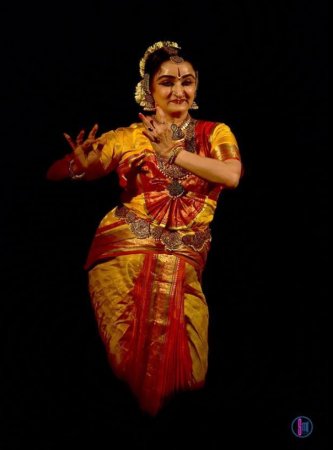 You have been proving yourself as a befitting and an astute leader as the President of the prestigious Sangeet Natak Akademi, New Delhi. Could you please let us know about your interesting experiences, ambitious ideas and plans to enrich the premier music and dance body of the country? The recently held International Dance Seminar and festival held in Delhi under your leadership was a grand success. What are your feelings? The IFID was a one-of-a-kind gathering of dance artistes from various dance disciplines. During the event, we initiated discussions, raised important issues, and collaborated to find solutions. We also drafted recommendations for the Government. This was a historic moment as it marked the first time that bureaucrats and artistes came together for an open conversation. Building on the success of IFID, we are now working on the IFIM - the International Festival on Indian Music. Additionally, we are planning a conference on the 11 classical languages and exploring the impact of performing arts in promoting these languages. What are your plans to support and continue your tradition and style of dance? At an official level, we are working towards integrating arts and making arts a compulsory subject in school education. At a personal level, my college - Bharata College of Fine Arts & Culture - continues to provide excellence in dance education through the shastra and sampradaya methodology in 5 traditional dance forms - Bharatanatyam, Kathak, Odissi, Manipuri and Kuchipudi. The college preserves Guru Shishya Parampara, whereby students can get academic sanction but need not change their baani or style and can continue to learn the practical syllabus from their Gurus whilst expanding on their knowledge. The idea is to create a generation of thinking choreographers, creative dancers and insightful researchers. 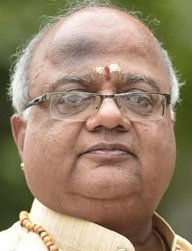 Dr. M. Surya Prasad is a veteran, accomplished music and dance scholar, thinker, critic and columnist of Bengaluru. Response * Very good questions and also answers given by the interviewer. Very glad to read. Informative, motivative and useful discussion. - K Ramamurthy Rao, Mysore (March 25, 2025) * Beautiful interview. - Dr.Nagamani Srinath (March 20, 2025) * A very indepth interview showcasing the finers aspects of dance with all the intricacies. Dr.Surya Prasad, with his depth of knowledge in the field, has asked Dr.Sandhya Purecha the right questions resulting in the reader being enlightened to the various aspects of dance. - Sridhar Comaravalli (March 19, 2025) Post your comments Please provide your name and email id when you use the Anonymous / blog profiles to post a comment. All appropriate comments posted with name and email id in the blog will be featured in the site. |